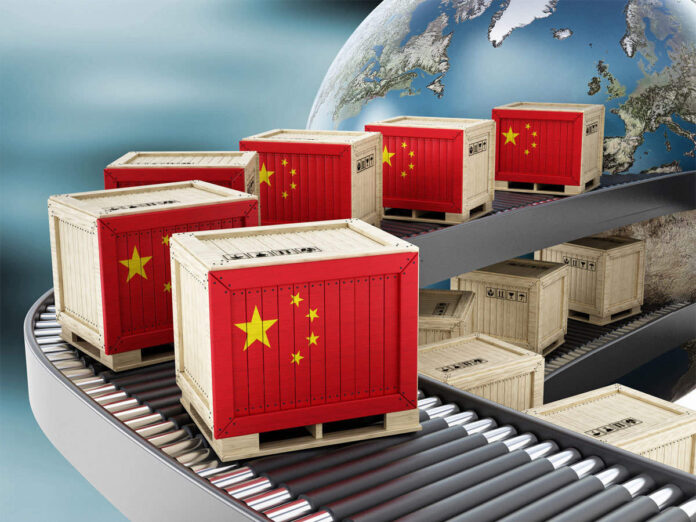BEIJING: China’s export growth jumped to the highest in over two decades, official data showed Sunday, with imports also surging in a sharp bounce back from the coronavirus outbreak that had brought activity to a near halt.
Exports spiked 60.6 percent on-year in the January-February period, above analysts’ expectations and boosted by electronics and mask shipments, while imports rose 22.2 percent, official data showed Sunday.
Separately, a former Chinese industry minister said that China is at least 30 years away from becoming a manufacturing nation of “great power”, despite boasting the world’s most complete industrial supply chains.
In recent years, China has become the world’s top manufacturing nation, accounting for over a third of global output, driven by domestic demand to produce everything from motor vehicles to industrial machinery. But its industries’ heavy dependence on U.S. high-tech products such as semiconductors constituted a strategic weakness.
“Basic capabilities are still weak, core technologies are in the hands of others, and the risk of ‘being hit in the throat’ and having ‘a slipped bike chain’ has significantly increased,” said Miao Wei, who was Minister of Industry and Information Technology for a decade before stepping down last year.
As the Chinese economy pivots towards a services-based model and polluting smoke-stack factories are mothballed, manufacturing output as a share of the economy has declined. In 2020, manufacturing accounted for slightly over a quarter of gross domestic product, the lowest since 2012.
“The ratio of manufacturing output to GDP has been declining too early and too quickly, which not only weighs on economic growth and affects employment, but also brings security loopholes to our industries and diminishes our economy’s ability to withstand risks, and its global competitiveness,” said Miao, now a member of the Chinese People’s Political Consultative Conference (CPPCC), the top advisory body to the government.
President Xi Jinping said in November that innovation in the manufacturing industry is far from adequate, and firms need to tackle “bottleneck” technologies to become fully innovative.
“China’s manufacturing industry has made great achievements in recent years, but the situation of being ‘big but not strong’ and ‘comprehensive but not good’ has not been fundamentally changed,” Miao said in a speech to CPPCC delegates at the Great Hall of the People in Beijing.
There are many problems restricting the high-quality development of Chinese manufacturing, but the most fundamental one is insufficient market-oriented reforms, Miao said.
While the tax burden on companies remains heavy, and financial support on the manufacturing sector needs strengthening urgently, a shortage of innovative and high-tech talent has also significantly constrained development of the sector, Miao added.
“We must maintain our strategic resolve, stay clear-headed and deeply understand the gaps and deficiencies.”




